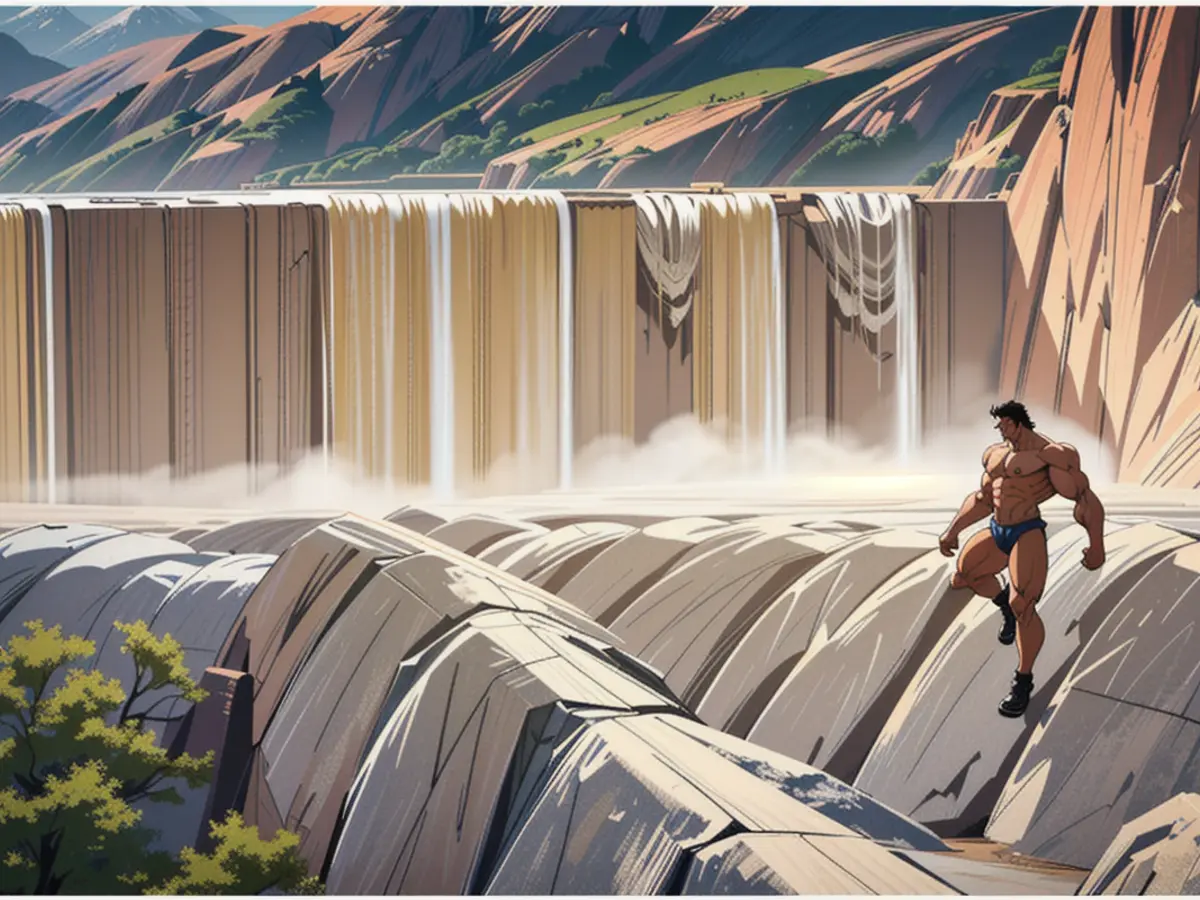Analysis Reveals Hydropower Dams Are Outdated and Pose Significant Risks
Harnessing the Power of Water: A Historical and Modern Perspective
Tracing back over two millennia, people have been harnessing the power of water to drive machinery. From paper making to processing grain, water wheels played a significant role in various industries during the Han Dynasty and beyond [1]. The 1800s saw numerous advancements in water power technology, culminating in the generation of electricity [1].
However, as our technological ambitions grow, so does the need for careful consideration. For instance, the Banqiao Dam Disaster of 1975, China, and the 1889 Johnstown Flood in Pennsylvania, both have notable casualties and serve as stark reminders of the risks associated with hydropower [1]. Given these dangers, it's past time for us to pursue better, safer options for electricity generation.

In recent years, research has shown that dam construction frequently leads to deforestation. Surprisingly, this deforestation has a detrimental impact on water security, which appears counterintuitive. Dams are often believed to contribute to water security, but in reality, they contribute to its depletion [2].
This deforestation largely occurs during the construction of dam reservoirs. Tropical rainforests, a crucial source of water and a key component in our climate system, are destroyed in the process, disrupting the natural water cycle [3]. Studies indicate that dams can reduce their potential power generation by up to 10%, resulting in substantial financial losses [3].

Inevitably, the lack of trees negatively impacts global air currents and precipitation patterns. Research by Duke University indicates that deforestation in the Amazon and the Congo Basin has a direct influence on the reduction of rainfall in the United States and Europe, respectively [2].
Without trees to guide water down to the water tables and serve as the headwaters for rivers, desertification becomes increasingly likely [3]. Moreover, the loss of these rainforests and their ecosystems impedes the recovery of the regions from droughts, turning a manageable issue into a long-term challenge [3].

In summary, deforestation caused by dams leads to decreased rainfall, altered precipitation patterns, reduced river flows, and compromised water security. These changes diminish hydroelectric power generation, contribute to drought risk, and disrupt regional climates globally. The environmental destruction from dam-induced deforestation also threatens biodiversity and indigenous livelihoods, posing complex challenges for sustainable development and climate mitigation worldwide. Forest conservation is essential to maintain stable water cycles and precipitation patterns that support energy security and ecological resilience [2][3][4].
References:[1] International Hydropower Association. (n.d.). History of hydropower. Retrieved from https://www.hydropower.org/what-is-hydropower/history-of-hydropower[2] World Resources Institute. (n.d.). Dams and hydropower: Conflicting advantages and challenges for ecosystems. Retrieved from https://www.wri.org/resources/analysis/dams-and-hydropower-conflicting-advantages-and-challenges-ecosystems[3] Rodríguez-Iturbe, I., & Rinaldo, A. (1997). Dams, rivers, and basins: A perspective on a century of research. Water Resources Research, 33(4), 401–414. doi:10.1029/96wr03187[4] Abramovitz, M., Galbraith, T., & O'Halloran, C. (2003). Induced hydrological effects on hydropower plants: A review of the literature on run-of-river hydroelectric plants. Renewable Energy, 25(1), 7–37. doi:10.1016/s0960-1481(02)00110-4[5] Food and Agriculture Organization of the United Nations. (n.d.). How forest loss impacts water security. Retrieved from https://www.fao.org/forestry/36019/en/
- One of the most infamous cases of hydropower-related disaster is the Banqiao Dam, constructed in the 1880s, whose catastrophic failure in 1975 resulted in significant casualties and damages.
- C4611272ccf19613ac39c87c3e9222c97, a research paper published in the field of science, indicates that health-and-wellness, fitness-and-exercise, climate-change, and nutrition are all interconnected with environmental-science, including the impact of deforestation on various aspects of human life.
- The Johnstown Dam Disaster of 1889, reminiscent of Banqio's tragedy, serves as a brutal reminder of the adverse effects of outdated energy generation technologies on human life.
- In recent times, research has revealed that hydropower-induced deforestation can disrupt the natural water cycle and cause negative climate impacts, such as precipitation reduction.
- Flying Rivers, a 2020 documentary, showcases the environmental destruction caused by deforestation due to dam construction in the tropical rainforest regions, such as the Congo Basin.
- By examining the link between deforestation, water security, climate change, and hydropower, we can see that sustainable and responsible approaches to energy generation are necessary to ensure a healthier planet and future generations.








